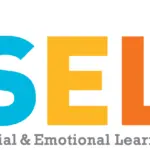Decreasing the Rate of Poverty: Greater Emphasis on Secondary Education
It was a few years back when UNESCO had published a paper claiming that education does have a crucial role to play in the eradication of poverty. The need to revisit this observation has been felt more intensely by us since the contents of new study by the United Nations have come into light.
Notably, a new United Nations study claims that the rate of global property can be reduced to its half if all adults choose to complete at least their secondary education. Before delving into the details of the new study, let us take a look back at the fundamentals of the previous report that we have mentioned here.
The Previous Report Establishing the Connection between Education and Poverty
According to the report, increased access to education can clearly lead to the decrease in poverty. Acquired – fundamental- skills like writing, reading and numeracy guarantee proven efficacy when it comes to its impact on the marginalized population’s income. It definitely leads to an increase in the returns as far as the overall economy is concerned. To start off with, let us point out that education has a pivotal role to play when it comes to changing food security structures. A very impactful study conducted in the year 1980 concluded that primary education does influence the quality of agricultural production. The study surveyed the effects of primary education on agricultural produce in 13 countries. It was found that the average annual gain in agricultural production was directly linked to the years of schooling. An 8.7% increase in production was noticed when the connection between agricultural produce and the years of schooling was taken into account.
The Recent UNESCO Study
In a way, the findings of the previous study have been reinstated by the new UNESCO study. In the recent years, the efforts to eradicate poverty worldwide have only been beefed up. The findings of the new studies – it can be said- have actually brought a new ray of hope for those working to meet their Sustainable Development Goal to wipe out poverty by 2030.
More on the Findings
According to the report, if the adults choose to complete their secondary education then around 420 million people could actually be lifted out of poverty–thereby reducing the total number of poor people in the world by more than half and by two-thirds in South Asia and sub-Saharan Africa. The developing countries – between 1965 and 2010 had experienced tremendous growth, which of course was significantly steered by education. The Global Education Monitoring (GEM) team of UNESCO – based on these events concluded that around 60 million people can get out of poverty only if they choose to do two more years of schooling.
The UIS or UNESCO Institute of Statistics chose to release this paper (connecting global primary and secondary education to reduced poverty) right ahead of the UN High Level Political Forum to be held in New York from 10th to 19th July this year.
The paper also emphasizes the need for reducing the direct and indirect costs of education.
Leave a Reply
You must be logged in to post a comment.


















